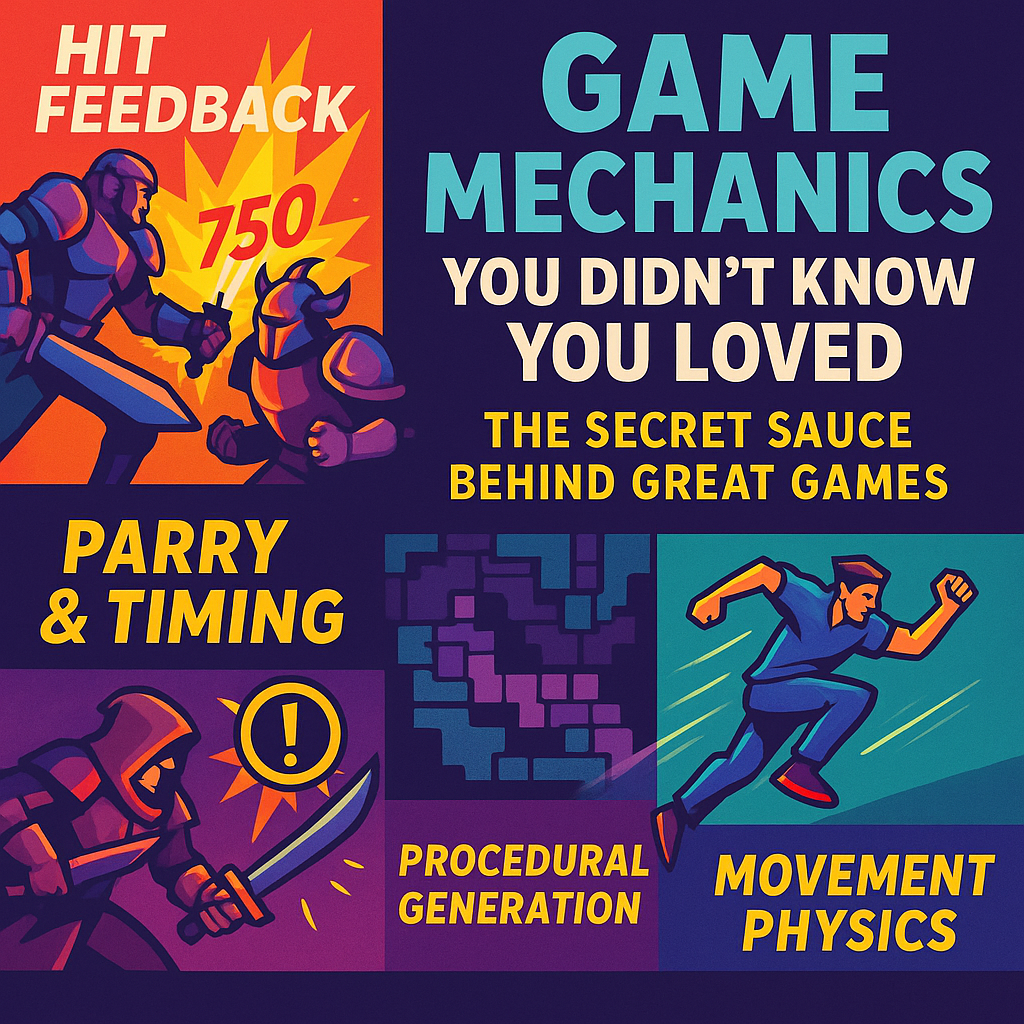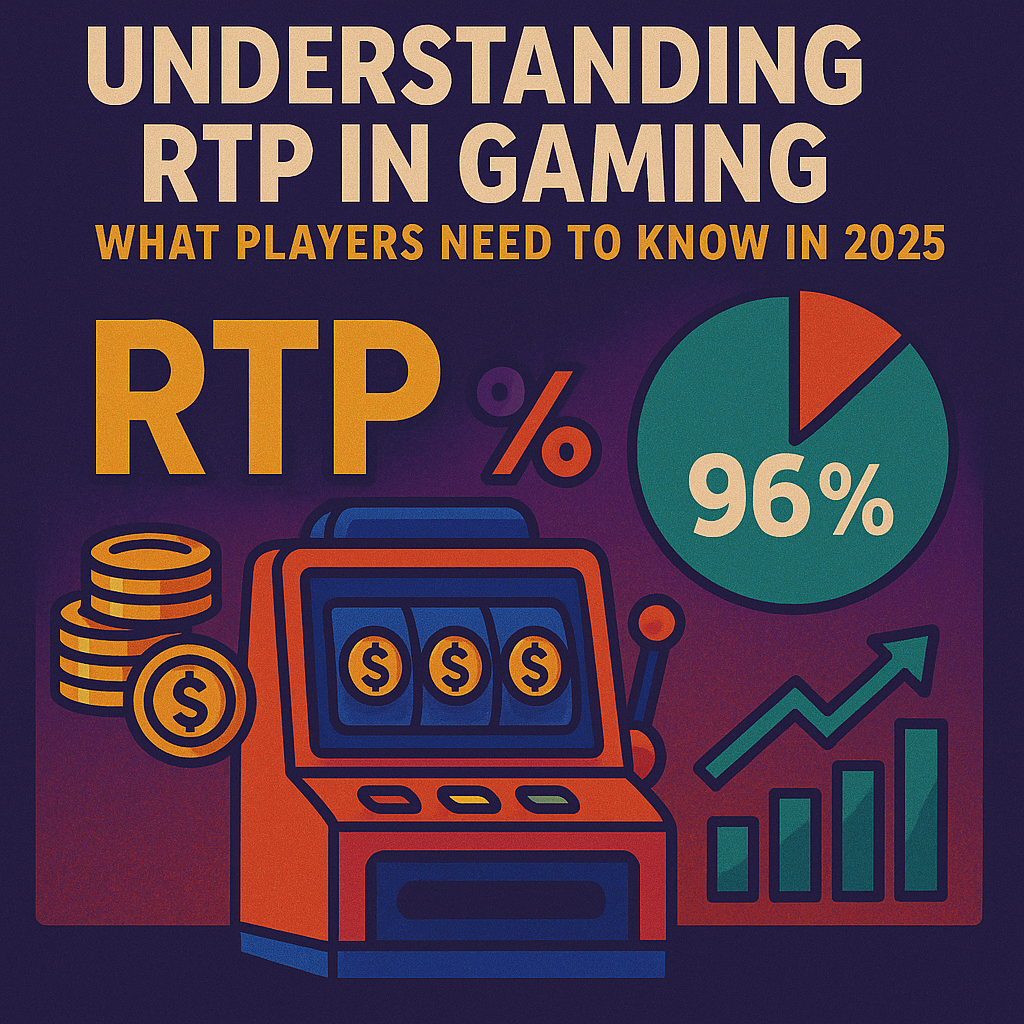Intro: It’s Not Just Graphics — It’s the Feel
You’ve probably played a game that just felt right. The movement was smooth. The combat was satisfying. The feedback was addictive. But what exactly made that experience so good?
In 2025, visual fidelity is no longer enough to impress players. The real secret lies in game mechanics — the systems beneath the surface that shape how a game feels, behaves, and responds.
Let’s explore the unsung heroes of great gameplay.
1. Hit Feedback: Making Every Action Matter
Imagine slashing an enemy and seeing no response. Now imagine the screen shakes, a sound pops, and a red number flashes. That’s hit feedback — the mechanic that makes every attack feel impactful.
Used brilliantly in:
- God of War: Ragnarok
- Doom Eternal
- Blade Arena VR
Types of feedback:
- Screen shake
- Controller vibration
- Slow-motion effects
- Blood splatter or damage flash
- Audio stingers
🎯 Players crave cause-and-effect. Good hit feedback closes that loop instantly.
2. Parry & Timing Systems
Games like Sekiro, Sifu, and Elden Ring popularized mechanics that reward precise input. Parrying an enemy’s attack isn’t just defense — it’s dominance.
This mechanic:
- Encourages skill mastery
- Keeps players engaged through risk/reward
- Creates adrenaline-packed moments
In 2025, many indie and AAA titles are adopting timing windows as part of basic gameplay, even outside of combat.
3. Dynamic Difficulty Adjustment (DDA)
You’re low on health, and suddenly the enemies become just a bit slower. Or you’re dominating, and the boss gets an extra attack phase.
That’s dynamic difficulty in action.
It’s invisible to most players — and that’s the point.
Implemented in:
- Resident Evil 4 Remake
- Left 4 Dead 2
- Hollow Rift
Smart DDA:
- Prevents frustration
- Keeps players in a state of “flow”
- Balances challenge and fun
Critics once called it “cheating.” Now it’s seen as intelligent design.
4. Procedural Generation (When Done Right)
Randomly generated levels can be chaotic and dull — unless they’re crafted with intention.
Modern procedural systems use:
- Modular level design (pre-built rooms assembled in dynamic ways)
- Biome logic (environment affects layout and loot)
- Seed-based variation (for consistency or challenge sharing)
Best examples in 2025:
- Dead Cells 2
- Terraformer 2077
- Dungeon Spark
Well-implemented procedural mechanics boost replayability without sacrificing design quality.
5. Audio as a Mechanic
Game audio is more than just background music — it’s part of the mechanic.
Examples:
- Enemies make different sounds depending on their alertness (e.g. The Last of Us Part II)
- Footsteps change based on environment, giving players tactical info
- Rhythmic gameplay (e.g. Hi-Fi Rush) synchronizes combat with music
In 2025, adaptive music systems now shift based on:
- Player health
- Location
- Narrative decisions
Audio is no longer decoration — it’s a design layer.
6. Momentum & Movement Physics
Why do Titanfall 2 and Neon Drift X feel so good to move in?
Because they use momentum systems that:
- Preserve speed from actions like jumps or slides
- Reward chaining movement efficiently
- Make the player feel in control of motion, not on rails
These mechanics are now seen in:
- Parkour-based shooters
- Skate and trick games
- Speedrun-designed platformers
Good movement = good gameplay, even without combat.
Conclusion: It’s the Invisible That Hooks Us
The most memorable games don’t just show us beauty — they let us feel it through interaction.
From responsive controls to invisible difficulty balancing, these deep mechanics are the unspoken language between game and player.
🎮 So next time a game gives you goosebumps, pause and ask — what exactly made that moment work?
Chances are, it was a mechanic you didn’t even know you loved.



